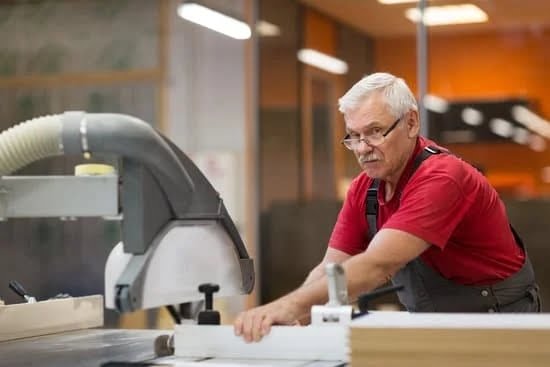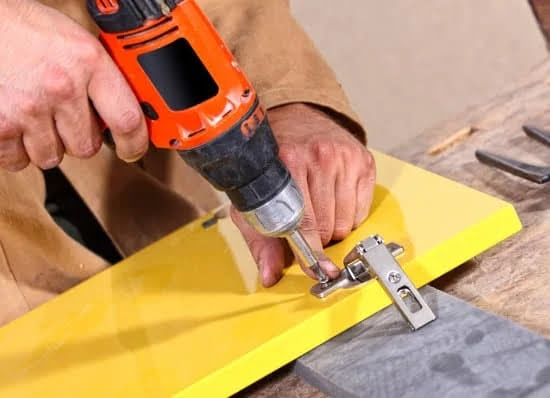Introduction to Woodworking Sharpening Systems
A woodworking sharpening system is a specialized form of power tool used to maintain an edge on a variety of tools, such as chisels, carving knives, scissors and drills. The sharpening system uses dry grinding or wet grinding processes to produce a finely honed blade. Types of sharpening systems vary according to the desired precision and fineness of the finished edge as well as whether manual or automated machines are used.
Benefits of using woodworking sharpening systems include improved accuracy when shaping and gouging timber, greater control over the sharpness of blades resulting in less waste from dull tools, and increased safety through reduced risk from slipping when handling blades. Furthermore, maintaining different levels of hone is made easier by the use of wheels designed for various purposes like general-purpose maintenance whetstones for basic re-sharpening or diamond laps for fine tuning an already keenly honed edge.
Safety considerations for woodworking Sharpening Systems include making sure appropriate personal protective equipment (PPE) is worn at all times; such as eye protection and gloves should be worn when using any kind of machine sharpeners while respiratory equipment should be fitted to ensure that no dust particles are breathed in. In addition, operators must be mindful not to put too much pressure onto the tools being worked on; moderating their grip strength during use can go a long way towards minimizing accidents from either contact with active grinding discs or errant flying material when sharpening. Finally, it is important to keep work areas free from clutter and foreign objects to reduce tripping hazards.
Exploring the Principles Behind Sharpening
Sharpening is an essential skill in any woodworking or carpentry workshop. Having a sharp edge on your tools allows you to work more efficiently and precisely. Every tool has a different purpose in your workshop, and every tool requires its own unique sharpening technique. It can be daunting to learn all of the different types of sharpening systems, but understanding the basics is key.
The first consideration is the type of material that needs to be sharpened. Steel, iron, and other metals can easily be damaged or warped if sharpened incorrectly while softer materials such as plastics may only need occasional honing. Knowing the material you will be working with helps guide which techniques should be used for successful sharpening results.
Once you have chosen the correct techniques for your particular project, it’s time to consider the various tools available for sharpening. Commonly used tools include whetstones, diamond files, bench grinders, belt sanders, and abrasive jigs, among others. Each has certain advantages that can help create a finer edge on the tool being sharpened. For instance, a whetstone is often used for finer edges due to its ability to hone away small imperfections at an angle without changing the profile of the blade; diamond files are often used with harder metals where more pressure is required; and bench grinders are best suited when reshaping or creating a completely new edge on a tool made of hard material such as steel or iron. Additionally, special abrasive jigs help ensure consistent angles while shaping or resharpening blades quickly and accurately.
Learning how to sharpen effectively can greatly improve your overall skillset in woodworking or carpentry projects by making work easier and reducing fatigue from having dulled instruments that take longer to use than those properly maintained with periodic care such as regular honing sessions combined with specialized tools provided by modern technological advances in precision tools and processes. In addition to faster project completion times during carpentry projects there is also greater peace of mind knowing that objects have been cut using sharper blades resulting in stronger results and longer lasting furniture pieces overall which translate into less retouching over time due to errant blemishes found along seams between joints caused by neglected maintenance activities
Exploring Types of Sharpening Systems
Waterstones: Waterstones are a popular sharpening stone which use water to sharpen tools, knives, and other cutting-edge equipment. They consist of two stones, usually one with finer texture, and the other with a coarser texture. The user should wet both sides with water before using them in order to improve the performance of their sharpening process. Waterstones may require flattening but can be fixed easily by using diamond stone for this purpose. One benefit of using waterstone is that it can provide a criss-cross polish pattern unique to this tool.
Power Sharpeners: Power sharpeners are motor-driven automatic grinding machines that quickly sharpen your blades for more efficient cutting. This type of sharpener utilizes an adjustable grinding wheel or belt and is used for quickly producing sharper edges over traditional methods like whetstones or manual filing. The benefits of these electric sharpeners are that they produce consistent results, they don’t require hand filing or muscles tiring out and you can usually change the angle at which you sharpen your blade too so it’s very versatile in terms of usability. However, choosing the right power sharpener might be critical as it requires consideration depending on your need.
Manual Sharpening Techniques: When relying on manual techniques, there are numerous options available such as freehand honing with a wetstone, various files or whetstones or sandpaper can also be used while hand filing offers great control over angle accuracy thereby resulting in superior cutting ability—resulting in sharper cutting edges. In the case of wooden tools like chisels or planes a combination of whetstone & sandpaper could bestow excellent results without requiring heavy investment in tools & accessories— although taking some extra time!
Setting Up Your Sharpening System
Before setting up your woodworking sharpening system, it is important to consider what you need to have in place for maximum efficiency. Make sure that the system you create can be easily adapted as needed and offers enough space to work comfortably. Here are a few key things you should consider when setting up your sharpening system:
1. Selecting an Appropriate Workspace: A wide and robust workspace is essential when creating your sharpening system – this will enable you to move quickly and easily between the tools required for sharpening. Where possible, it’s a good idea to choose somewhere which has natural lighting and ventilation – this will help provide added visibility whilst keeping any generated dust away from your workspace.
2. Selecting the Right Equipment: You don’t need expensive equipment nor do you need lots of items – a solid set of sandpaper sheets, a honing block or steel, strop blocks and polishing compounds are all key elements of your sharpening toolkit. It is also important for you to decide if wet or dry sharpening suits the blades best – this technique must be practiced regularly to maintain efficiency levels.
3. Creating Effective Sharpening Techniques: Perfecting effective sharpening techniques requires practice but can pays off in spades in terms of time saving – covering how to sharpen different types of blades (rounded blade/vee blade/straight blade) including details on required angles and polishing methods etc. Having speed drills ready helps increase efficiency by providing practice without breaking up flow – simulating role play scenarios always helps!
Maintenance and Care for Your Sharpening System
In order to keep your woodworking sharpening system running in optimal working order, it is important that you follow some simple but essential maintenance and care instructions. Below are a few tips to help you keep the system in top condition:
• Always read the manual: Every sharpener has its own specific instructions on how to use and care for it; make sure that you are familiar with these instructions before using your system.
• Clean the blades after each use: Wipe away any dust or debris from the blades after each sharpening job. This will increase the longevity of your product and ensure that it is always in optimal working order.
• Store it properly: When not in use, store your sharpening system in a safe, dry place – preferably away from heavy traffic areas.
• Inspect & sharpen regularly: Make sure to inspect the blade before each use for signs of dullness or damage; sharpen more often if needed. Inspect other components such as screws, guards, and jigs for any signs of wear or tear as well.
• Use quality supplies: Investing in good-quality sharpening stones and lubricants can save your system from wearing down too quickly; bad products could potentially cause long-term damage to both the machine and blades.
Choosing the Right Accessories for Your System
When selecting woodworking sharpening systems, it is important to choose one with high-quality accessories that you can use for a variety of tools. Your budget should be something you consider when selecting the accessories for your system. Quality tools and products can be costly upfront, but they pay off in the long run in terms of ease of use and accurate cutting results.
There are many different types of accessories available for a woodworking sharpening system, from honing guides and jigs to diamond stones and sandpaper kits. The type and quantity of accessories that you need depend on the types of tools you’ll be using and how sharp you want them to be. Besides investing in a reliable set of sharpening stones, it is vital to have the correct honing guide or jig that fits your system. Having the right guide or jig will ensure that while setting up your system, all angles will be accurately aligned so your blades come out razor-sharp each time.
The importance of choosing the right type and grade of abrasive grains should not go overlooked when stocking up on items for your woodworking sharpening system. There are several grades available, such as coarse (60 grit), medium (200 grit), fine (400 grit) or extra fine (600 grit). You should also consider buying some strops made from leather or felt-padded metal plates for polishing blades to an extra-fine edge. Oilstone covers offer additional protection from water damage when storing stones after use, so don’t forget these as well.
How to Create a Safe and Optimal Sharpening Space
Sharpening rooms or areas in a woodworking shop should be well arranged, comfortable, and correctly lighted. To create an optimal sharpening space, make sure the room has adequate lighting without glare. This will help you see any small imperfections in your work that require honing or sharpening. Additionally, be sure to have a steady supply of water nearby to cool the sharp tools if needed. Placing a non-slip surface under the sharpener is recommended for any floor mounted machines to avoid slips or moves during operation.
In addition to creating a safe and optimized space for sharpening tools, it’s important to take safety measures as well when handling tools such as chisels or knives. Wear safety glasses while working with grinding surfaces and always keep hands away from the blades when they are in use or when modifying them – even if unplugged. Additionally, keep your working area clear of debris; cluttering hinders movement and increases the risk of injury by tripping on loose objects. Lastly, always store blades and sharpeners out of reach of children and other curious people in order to prevent any accidents.
Examples of Different Projects That Benefit from a Sharpening System
Furniture: A woodworking sharpening system enables furniture makers to easily sharpen their chisels, saws, and other cutting tools with precision. This allows them to make more precise cuts in hardwoods and softwoods, achieving a perfect finish for the piece of furniture. The sharpening system can also help speed up the process by offering uniformity in angles and edges.
Decorative Art: Sharpening systems are also beneficial for creative artisans who work with wood. By having their tools at their sharpest, artists can craft intricate designs in wood, such as carvings or inlays. Additionally, working with sharp tools means less wear on the wood itself and fewer potential mishaps during the creative process.
Small Projects: A sharpening system can be used for all types of small projects, from birdhouses to cutting boards. Whether it’s a detail-driven diorama or a simple shelf construction project – having access to a reliable sharpener helps ensure that edges are smooth and cuts are precise without any time consuming filing or sanding. A good quality sharpening system will save hobbyists time and energy by ensuring their saws and blades always stay razor sharp on small projects no matter how often they’re used.
Benefits of Using a Woodworking Sharpening System
A woodworking sharpening system can provide many benefits for woodworkers who want to save money and produce high-quality projects. This system will allow users to save both time and money by creating a repeatable, accurate process that they can use over again without worrying about having to buy new sharpening tools every few weeks or months. It also helps woodworkers maintain the quality of their work since their tools will stay sharper for longer periods of time. With a sharpening system in place, users can easily achieve consistent results, every time they sharpen. The system ensures that all angles are properly maintained so that the edges are as sharp as possible. Additionally, the process requires minimal effort from the user, making it easier to sharpen tools with regularity. Furthermore, investing in a good sharpening system with advanced features such as variable speed settings will help users achieve better results more quickly and efficiently than ever before.
Common Mistakes to Avoid When Using a Sharpening System
1. Not sharpening regularly. Regular sharpening is essential for best performance and optimal longevity of the tools. Make sure to sharpen your tools often and be consistent with your schedule to prevent problems from arising in the future.
2. Using too much pressure while sharpening. Applying too much pressure while using a sharpening system can result in an uneven surface along the entire cutting edge, which can cause chipping or breakage of the tool. The right amount of pressure can vary depending on the type of material being used so it’s important to use a light touch when attempting to sharpen any tool.
3. Not cleaning after sharpening. After each use, it’s important to make sure you thoroughly clean both the blade and the sharpener itself in order to prevent any cross-contamination between jobs that could lead to rust or poor performance down the line . Be sure to use an appropriate cleaner suitable for your particular setting and tools as recommended by the manufacturer’s instructions whenever possible.
4. Under-sharpening or over-sharpening inappropriately sized blades or edges . Sharpening different types of blades requires an entirely different approach than that used for larger blades and surfaces; pay attention to what surface size you’re working with and take into consideration optimal angles & coarseness levels regarding where they should fall within your specific sharpening system specifications before beginning work on them . This will ensure quality results every time!
Conclusion
In conclusion, sharpening your own woodworking projects can offer great benefits. By sharpening the tools yourself, you are able to ensure that your cuts are well-defined and accurate. You also save money on outsourcing work and can make custom adjustments if needed. Additionally, it allows you to combine different implements for a more diverse range of cuts. This leads to a higher quality finish for both professional or personal woodworking projects. With the right woodworking sharpening system and proper training, anyone can become an expert in sharpening their own blades!

Hi everyone! I’m a woodworker and blogger, and this is my woodworking blog. In my blog, I share tips and tricks for woodworkers of all skill levels, as well as project ideas that you can try yourself.





